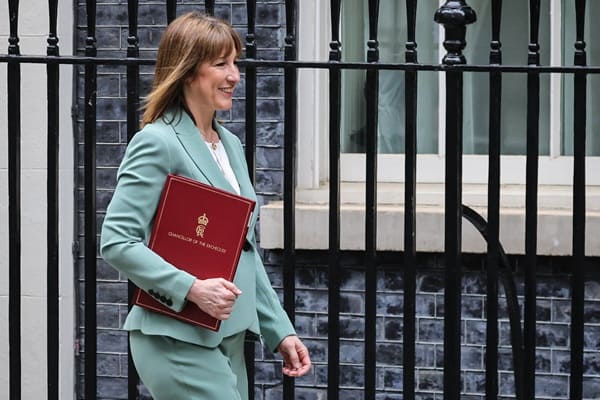The government’s Business Population report offers a vital opportunity to reflect on the latest statistics concerning small businesses and their implications for our community of small and medium enterprises (SMEs) across the UK.
The data indicates a notable resurgence in the SME sector, with the number of small businesses rising to an impressive 5.68 million, which accounts for 99.18% of the total business population.
This 3.5% increase, equating to 191,000 new businesses since last year, is a testament to the resilience and entrepreneurial spirit driving our economy, and it is heartening to see so many individuals taking the initiative to establish their own ventures, but as chancellor Rachel Reeves recently said, the UK’s economy “isn’t broken, but it does feel stuck”.
Addressing this issue needs to be a priority for the survival of SMEs within turbulent market conditions.
While the number of SMEs is on the rise, we must address the slight decline in employing businesses, which decreased by 9,000 to 1.42 million.
This trend suggests that many new enterprises may be starting without the immediate intention of hiring, or perhaps are opting for non-employing structures. The emergence of 4.27 million non-employing businesses raises important questions about income stability and long-term growth prospects; with only 1.42 million businesses employing any staff, it’s crucial for entrepreneurs to consider how they might transition from self-employment to hiring. Creating strong and sustainable business models which create new UK-wide employment opportunities will go a long way to ‘unsticking’ the economy.
The concentration of small and medium-sized enterprises in key sectors like Construction, Professional Services, and Retail presents both opportunities and vulnerabilities. With 885,000 SMEs in Construction and 819,000 in Professional Services, these businesses are crucial for job creation and competition, helping to drive down prices and enhancing consumer choice. However, SMEs can be particularly vulnerable to economic fluctuations and regulatory changes; while they can adapt quickly, they often lack the financial resilience of larger firms, making them more susceptible to downturns.
The issue of business rates has a strong impact here. The Treasury plans to ease financial pressures on major supermarkets by reducing business rates for large retail premises, but no such consideration has been announced for SMEs despite similar pressures existing. Rising business rates can consume significant portions of their operating budgets, limiting their ability to invest in growth and innovation. Without similar considerations for SMEs, the financial burden could stifle their development and undermine their contributions to the economy: many of those much-needed 191,000 new businesses could find themselves priced out if the reforms go ahead as planned.
Geographically, the disparities in SME distribution are striking: London and the South East continue to dominate, with 1.04 million and 877,000 businesses respectively, while regions like Wales have seen declines in business numbers, down by 26,000 or 12%. There’s an urgent need for targeted support for SMEs in economically subdued areas where rising costs could exacerbate existing challenges. These regions should make a concerted effort to highlight their attractions for small businesses starting up, which often include affordable workspaces and local graduate talent left untapped.
Ultimately, while the outlook for SMEs is cautiously optimistic, it is pivotal that the government extends its support to address the specific challenges faced by smaller businesses. The upcoming Autumn budget offers an opportunity to act decisively for SMEs who have thus far been side-lined in government policy. We hope to see the budget taking steps to ensure that SMEs receive the support they need to thrive and contribute to Britain’s vibrant economy.

